Hasegawa 1/32 Ki-84 Frank
By Jay Laverty

Hasegawa Hit the Mark
Being a fan of Japanese aircraft designs I was thrilled to put it mildly when I heard we were to expect a Frank in 32nd from Hasegawa. Having built their recently released D-9 in 32nd I knew to expect some nice toolings, a good fit and an easy build. As usual Hasegawa doesn't disappoint. The model measures out very well against scale drawings and down to the rivet heads having complete detail no part of this aircraft has been overlooked. Superbly detailed, this model would be very acceptable to the box jockey and will build into a superb model straight from the box, however for the detailer in you this model forms an excellent base with which to work from.
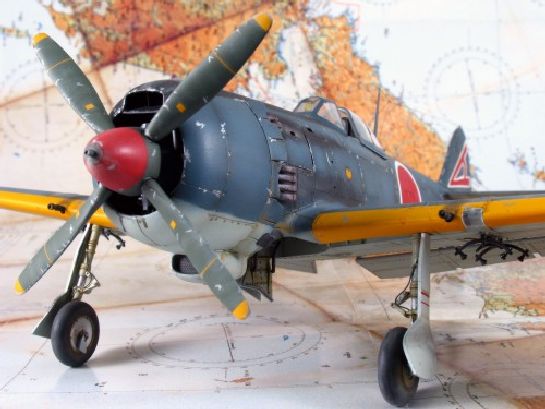
The only small drawback on the model so far is the fact that the cockpit has a couple of '70s moulding carryovers in the form of moulded on detail but this I can live with and as I intend to only to a small amount of additional detailing on this model I will merely paint it and weather it for effect. The cockpit will receive only minor additions in the form of some wiring by means of fuse wire and plastic rod, after which it looks very acceptable.
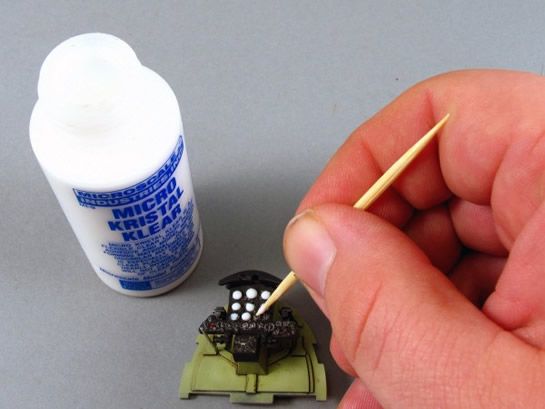
The engine is where I spent the majority of my time on this model and I hope it was time well wasted! I used fuse wire held in place with a combination of superglue and Tamiya tape to detail the wiring looms, and found that this was all that was necessary. it sounds easy but it took several days, and a few tins of Boddingtons to complete.
The only issue with accuracy on this kit is the fact that Hasegawa chose to have the flaps dropped, which in reality was a very rare occurrence, as the plane was never left on the field with them dropped. I had contemplated doing the necessary work to fit them into place, as it would mean some surgery to the interior edge of the flaps and some carving of the slots that they fit into. But I though that they look much cooler dropped and decided to throw historical accuracy out the window in a concession to my personal taste and laziness. I'll bet that this isn't the first time that has happened in this hobby and it wont be that last I'm sure.
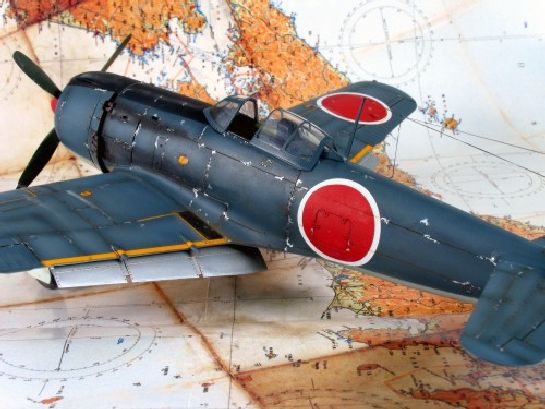
Mixing the Blues
Don't ask me to explain it but I subscribe to this strange passion many of us have that we have to build something aside from the three options provided in any kit we do. Bloody modellers, never satisfied are we?. this particular scheme caught my eye whilst I was perusing the Gakken book on the Ki-84 and I knew that this was the one (of course this was after I had completely messed up the planned All metal version in an Alclad misadventure!!!). I mixed up some Xtracolor Gloss Sea Blue, Violet Grey (RLM colour) and Intermediate Blue until I found a colour that I was satisfied matched the books colour chips ( and yes, I know how unreliable printed chips are but hey, what are you gonna do, It's not like I've got a Frank out back I can check for accuracy ) and proceeded to spray the scheme, using a shading technique to achieve the weathered effect. Don't ask me ratios of amounts as I generally pour it into the cup and hope for the best.

I used Gunze's decal setting solution for the first time and was impressed. Even if the entire range has some hokey "Mr. whatever" names it still works a charm. Worthy of mention here is MDC who had my Mr. Setter and Mr. Softer (my vote for most reservoir dogs named modelling product on earth) on my doorstep two days after I called them. Nice one Margret and Bob!
Finishing Up
The tail markings were the only real challenge to doing a different scheme from the box as this required some masking and clever placement of leftover decal from the sheet. It took an evening to do but the effort was well worth it as I am pleased with the result. That finished it was time to add the Raw umber wash and matte the entire model down.
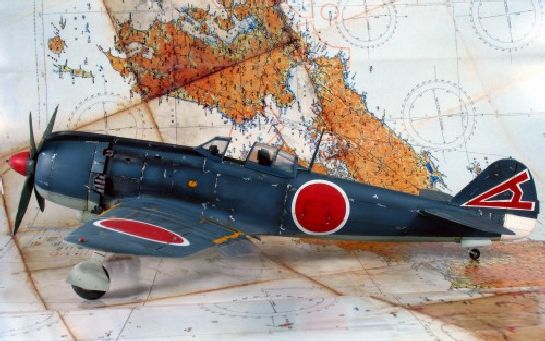
Once the matte varnish had dried I attached the aerial using Lycra thread, and did a bit of chipping using Model Master Chrome which my friend Tom Winter flies over for me from the states. And he brings a few hundred people as well just to make sure the plane isn't empty of course. The last part is the CMK weathering pigments which I do last as if I did them sooner I would end up with my fingerprints all over the place.
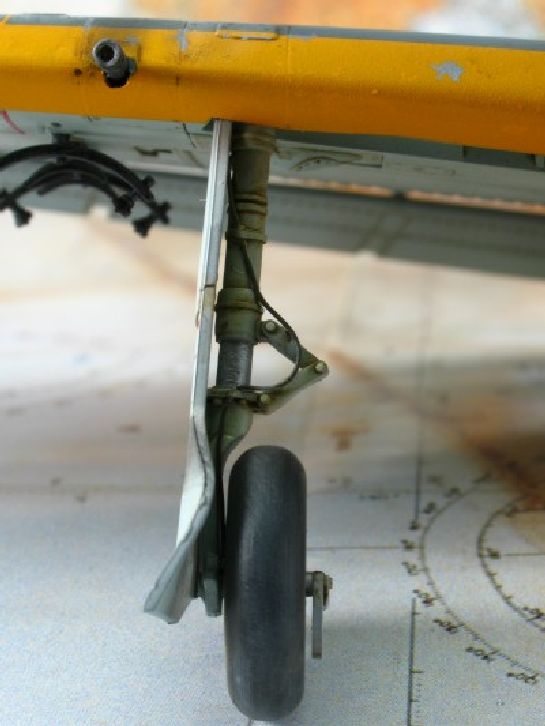
Overall I would say this model is a superb offering from Hasegawa and if it isn't sold out where you are I would heartily recommend buying one even if you have only a passing interest in Japanese aircraft. I hope you feel I have done the model some justice, as I certainly enjoyed building it and plan on building about three more.
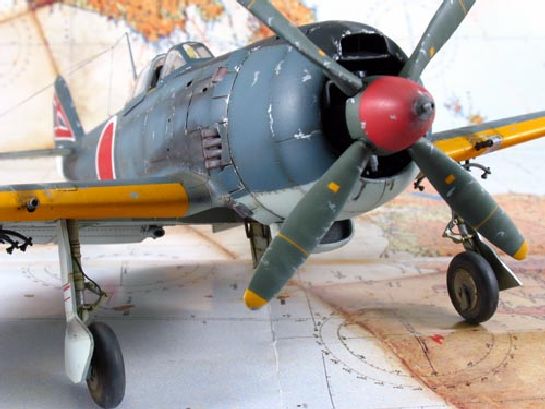
© Jay Laverty 2005
This article was published on Wednesday, July 20 2011; Last modified on Saturday, May 14 2016
